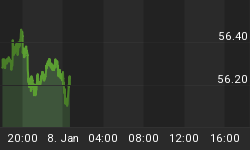Market value is generally determined by the price agreed upon between a seller who's willing to sell and a buyer who's able and willing to buy. Essentially, it's all about how much money (ability) and how much interest (willingness) in selling and buying out there. The money nowadays is, of course, plentiful and the interest in buying appears to be stronger than selling. Therefore, the stock market's sub-par performance in the last 2 trading days simply means that the market's merely taking a breather. And, regardless of my long-term bearish view of the market and our economy, the New Year rally seems likely to continue this week.
As I've mentioned in the past, the principle of the "Supply-side Economics" (a.k.a. Reaganomics) is to provide the best business environment for corporations to maximize profits and to prevent the financial market from collapsing. One way to accomplish that is to inject liquidity into the financial system. Even though the Fed's recent rate tightening cycle appears to be putting consumer spending (and the housing market) in jeopardy, that's just the demand side of the equation that may have to be sacrificed in order to keep the inflation contained.
In so doing, the Fed has raised rates 13 consecutive times while flooded the system with liquidity. The 52-week moving average of the change of M3 money supply from the preceding week had only fallen below the $6 billion mark once since 1997 (see blue box on Chart 1). The blue box is enlarged (Chart 2) to provide a better visual of the two recent periods (red vertical lines) where the latest M3 uptrend made higher lows. Zooming in on these two periods (Chart 3), we see that they occurred in August 2004 and then in May 2005.

Chart 1
 Chart 2 |  Chart 3 |
What's worth noting is that the market (the Nasdaq) trends in near perfect sync with this 52-week moving average of the weekly M3 changes. When comparing Chart 3 with Chart 4, it's not difficult to see that the NASDAQ's rise and fall during the period of August 2004 through April 2005 (see blue arrows on both charts) were in positive correlation with the 52-week moving average of the weekly M3 changes. And lately, the Nasdaq has gained about 25% since the 52-week moving average started trending higher again in May of 2005.

Chart 4
The increase of liquidity is also reflected in the surge of equity funds net cash flows. From the outflow of $5.80 billion for the week ended Dec. 21, 2005 to the inflow of $5.87 billion last week, a total increase of $11.67 billion had entered the equity funds in the past 4 weeks (Chart 4). Money may no longer have as much purchasing power, but it's indeed plentiful.

Chart 5
Technically, my proprietary Market Strength Index as well as my 12-indicator summation continue to move higher after giving buy signal on January 5, 2006. And my positive market strength indicators are further confirmed by the % of stocks above their 200-day moving averages. This indicates that there has been stronger interest in buying than selling.
Currently, more than 70% of the NYSE stocks and more than 55% of the Nasdaq stocks are traded above their 200-day moving averages. The 200-day moving average is perhaps one of the simplest yet the most important technical indicators. Professor Jeremy Siegel thought so. One of the simple investment rules mentioned in his book, Stocks for the Long Run, was the 200-day moving average. In addition, editor of the McClellan Market Report, Tom McClellan, whose parents invented the McClellan Oscillator, uses 40-week cycle analysis as one of his most reliable technical analysis tools. Of course, 40 weeks equal 200 trading days. In any case, 55.78% of the Nasdaq stocks over their 200-day moving averages can't be all that bearish, especially when this indicator has formed a bullish Ascending Triangle continuation pattern (see Chart 6 below).
Chart 6 shows that as the right side of the triangle grows narrower, the % above 200-day MA indicator is attempting to break above 55% for the third time since December 2004. And, judging from the sequence of higher lows, it may do just that this time. If and when it breaks out of the 55% resistance, the 55% would become the new support with a probable target of further ascend to 80-85%. This would coincidentally match the previous top formed in the 2nd half of 2003. Then, it'd be all over; it may come crashing down just as hard afterwards. The Nasdaq lost over 400 points from January 2004 to August 2004 while the %-Above-200MA dropped all the way from 80% to just around 20%.

Chart 6
But, before it's over, it's not over. There are plenty of able and willing buyers out there that are going to keep this New Year rally going for a while.
















